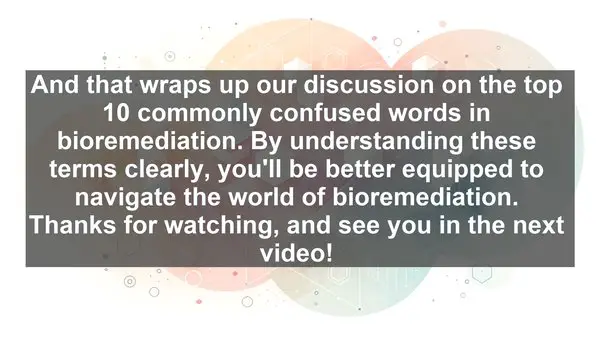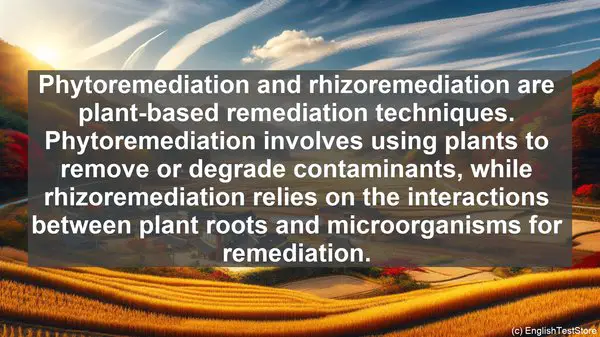Introduction to Bioremediation
Welcome to today’s lesson on the top 10 commonly confused words in bioremediation. Before we dive into the specifics, let’s have a quick overview of what bioremediation is all about.
1. Biodegradation vs. Biomineralization
One of the most common confusions in bioremediation is between biodegradation and biomineralization. While both processes involve the breakdown of contaminants, biodegradation refers to the conversion of complex compounds into simpler ones, while biomineralization is the formation of stable mineral products.
2. Bioaugmentation vs. Biostimulation
Bioaugmentation and biostimulation are often used interchangeably, but they have distinct meanings. Bioaugmentation is the introduction of specific microorganisms to enhance degradation, while biostimulation involves providing the necessary conditions for the growth of existing microbial communities.
3. Aerobic vs. Anaerobic
Aerobic and anaerobic conditions play a crucial role in bioremediation. Aerobic processes occur in the presence of oxygen, while anaerobic processes occur in its absence. Understanding this difference is essential for designing effective bioremediation strategies.

4. Ex situ vs. In situ
When it comes to the location of bioremediation, we have ex situ and in situ approaches. Ex situ refers to the removal of contaminated material to a different location for treatment, while in situ involves treating the contaminants at their original site.
5. Monoculture vs. Mixed Culture
The choice between monoculture and mixed culture is a critical decision in bioremediation. Monoculture involves using a single microbial strain, while mixed culture utilizes a consortium of different strains. Each approach has its advantages and limitations.
6. Cometabolism vs. Direct Metabolism
Cometabolism and direct metabolism are two ways microorganisms can degrade contaminants. In cometabolism, the microorganisms degrade the contaminant while metabolizing a different compound. In direct metabolism, the contaminant is the primary source of energy for the microorganisms.
7. Bioreactor vs. Biofilter
Bioreactors and biofilters are commonly used in bioremediation systems. A bioreactor is a controlled environment where microbial degradation occurs, while a biofilter is a system that uses microbial activity to remove contaminants from a gas or liquid stream.
8. Biostabilization vs. Bioaugmentation
Biostabilization and bioaugmentation are two strategies for managing contaminated sites. Biostabilization aims to immobilize the contaminants, reducing their mobility, while bioaugmentation focuses on enhancing degradation processes.
9. Phytoremediation vs. Rhizoremediation
Phytoremediation and rhizoremediation are plant-based remediation techniques. Phytoremediation involves using plants to remove or degrade contaminants, while rhizoremediation relies on the interactions between plant roots and microorganisms for remediation.
10. Biopiling vs. Landfarming
Biopiling and landfarming are ex situ bioremediation techniques. In biopiling, the contaminated soil is piled up and periodically turned to enhance degradation, while in landfarming, the soil is treated in situ, with the addition of amendments to stimulate microbial activity.

